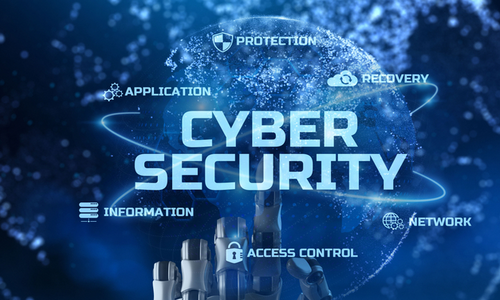
Jump ahead to
Introduction
Performing business activities utilizing digital platforms is a challenge for many organizations in this era. While such transformations occur, it is no surprise that an organization faces cyber-attacks. This has forced various businesses to make cybersecurity a vital part of their organization by employing professionals with Certified Information Systems Security Professional (CISSP) certification. However, with changes in technology, cyber threats with upgraded versions have predominantly increased today.
Cyber threats have become utterly significant in this era, especially for recently gone digital organizations. A lack of cybersecurity protocols can ruin the reputation of such organizations through data breaches and identity thefts. According to a recent survey, cyber attacks have cost the world billions of dollars. This has forced organizations to create awareness of such attacks and implement protocols as necessary.
Why do organizations face cyber threats?
As organizations become more dependent on the internet, it is necessary to implement equally stringent IT security measures to defend against cyber attacks. The source of such attacks can vary greatly. Some examples include business competitors, hackers, unhappy insiders, nation-states, etc. In 2020 alone, cyberattacks were hugely popular against several organizations. This has increased the need for cybersecurity professionals with a comprehensive understanding of managing an effective IT security system. To understand this better, let us look at some of the major cybersecurity threats.
Different types of cyber threats
Phishing attacks:
Phishing attacks occur when a certain target is made to reveal confidential data by posing as a licensed platform. Amidst the pandemic, several remote workers fell prey to phishing attacks. Such attacks were in the form of logins, emails, and software. The lack of employee cybersecurity training has made organizations vulnerable to such attacks.
Ransomware:
Ransomware has been the most common cyber attack for many years. Its sophistication is because hackers can easily find the required tools to develop such malware. Organizations that rely extensively on emails for transferring information fall prey to such attacks easily.
Attack on the Internet of Things (IoT):
Change from a physical workplace to a virtual workplace has increased organizations’ vulnerability. The work-from-home policy has increased the chances of an organization facing data breaches. Usage of the internet amidst the global pandemic has drastically increased, causing an organization to be more prone to such attacks through interconnected devices on the same network.
Identity thefts:
The number of identity theft incidents reported in the past two years is comparatively more than the number of incidents that have taken place in the past decade. Though several measures have been taken to curb this attack, technological changes have resulted in sophisticated ways of attacking. This has raised the question of privacy for organizations that completely operate using digital platforms.
Passwords attacks:
Password attacks still occupy the first position in cyber attacks. According to research, it was revealed that a major percentage of the population uses the same password for multiple sites. Also, it was found that close to 40% of the employees in an organization are prone to cyber attacks due to password compromise.
Zero-day exploits:
As the name suggests, such attacks take place on the day a weakness is found within the software. The zero-day exploits are carried through emails embedded with exploit code. Before a developer can realize the vulnerability, the damages will have occurred, costing the organization millions of money to set right. In 2021, several organizations faced this cyber attack leading to data breaches.
How can organizations defend against such cyber threats?
Organizations in the Information Technology industry and businesses dealing with sensitive information must implement stringent measures to safeguard digital assets against such threats. The general measures followed by companies include:
- Determining strengths and weaknesses: Irrespective of the size, every organization has to analyze the quantity of sensitive information it deals with and take necessary protocols to instill a rigorous cybersecurity system.
- Create awareness among employees: The digital era has necessitated organizations to create awareness amongst their employees regarding the cybersecurity protocols instilled within them. This helps employees to take cautious steps while performing their day-to-day operations.
- Conduct cybersecurity assessment: Significant organizational structure changes make businesses vulnerable to cyber attacks. Before carrying out changes, organizations must assess the risks involved before carrying out modifications and take necessary control measures to avoid potential risks.
Conclusion:
Apart from implementing such measures, several businesses today employ certified professionals to manage their cybersecurity systems. An individual with Certified Information Systems Security Professional (CISSP) certification demonstrates the ability to establish, implement and manage a stringent cybersecurity system that protects the organization from cyber threats. With the advancement in technology, a CISSP professional showcases the acquired skill set in cybersecurity as per the industry standards.
Undergoing CISSP Certification Training entitles individuals pursuing the course to gain knowledge on various aspects of cybersecurity like risk management, asset security, assessment and testing of security systems, identity and access management, and network security. The best way to ace the CISSP exam is by undergoing the training sessions conducted by Unichrone through highly qualified experts. During training, individuals will acquire practical experience in managing cybersecurity systems, thereby assisting organizations in safeguarding sensitive information from such cyber threats.



